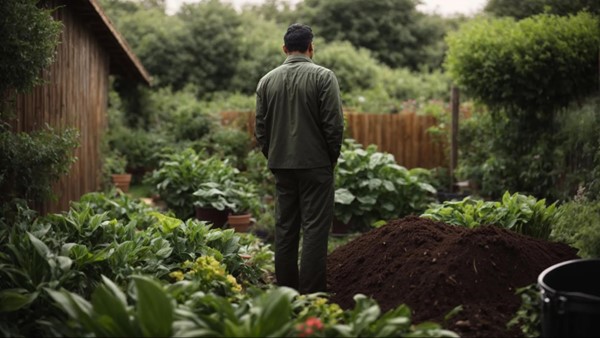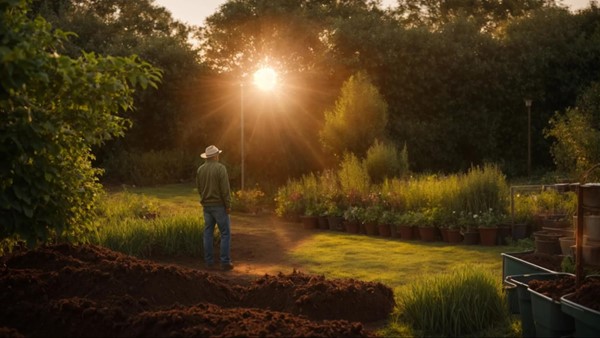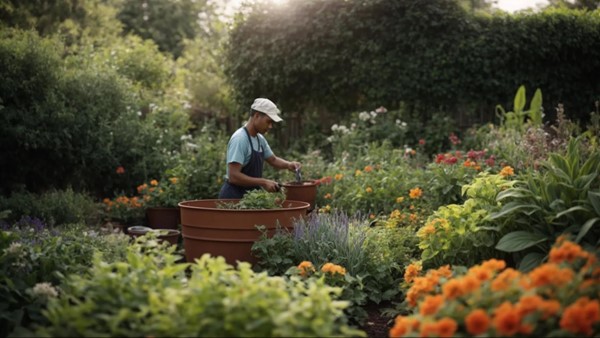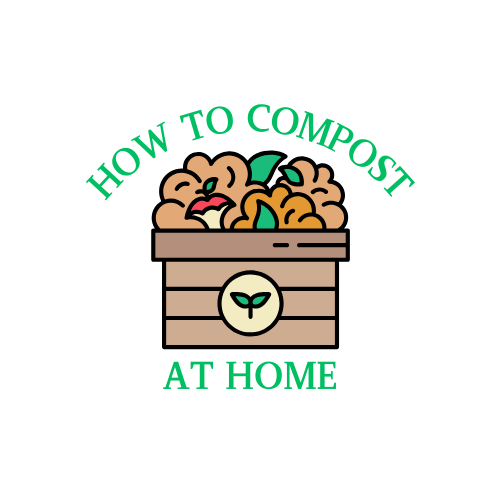How to Choose the Right Compost Starter for Your Garden
Home composting is like unlocking a treasure chest for your greenhouse, lawn and garden. Except it isn’t so much a chest as it is a compost bin. And, in the world of composting, one of the best ways to unlock that treasure is with the use of a compost starter.
Whether you’re a seasoned gardener or your fingers are just starting to flirt with dirt, the success of your compost can hinge on this critical choice.
Navigating the sea of options, from bokashi bran to homemade concoctions, can be as daunting as it is exciting, twisting through layers of microorganisms and nutrients essential for breaking down organic matter. Keep reading to unearth the secrets to selecting the perfect compost starter for your needs.
Understanding Different Types of Compost Starters
Peeking into the world of composting can sometimes feel like you’re stepping into a lush, though somewhat mystifying, garden. Among the avenues lined with heaps of eager compost, whispering sweet earthy nothings, lies the choice of your companion—your compost starter.
This choice is not merely picking between shades of green; it’s about understanding the chemistry between your lawn and garden and the various starters.
Some starters boast bustling communities of bacteria while others are havens for fungi, each playing a unique tune in the symphony of decomposition.
Nitrogen takes center stage as a crucial element that acts almost like a shot of espresso, speeding up the transformation from kitchen scraps to gold.
Each starter’s ingredients impact the quality of your soil structure in different ways.
Differentiating Between Bacterial and Fungal Starters
Diving headfirst into the bustling world of composting, one quickly stumbles upon a fork in the road: choosing between bacterial and fungal starters.
Bacterial starters are like the life of the party, introducing a horde of microorganisms that thrive in the warmer layers of your compost heap, eagerly breaking down each soft, sappy leaf into the much-desired rich, earthy goodness.
On the flip side, fungal starters play a longer, more mellow tune. They prefer the cool, damp corners of your compost bin, where they set to work on the tough, fibrous stuff like woody prunings. This slow dance is crucial for a well-rounded compost that offers a banquet of nutrients to your garden
The Role of Nitrogen in Accelerating Composting
Imagine nitrogen as the secret ingredient that turns an ordinary meal into a feast for your plants: it’s all about accelerating the composting process, making it faster and more efficient. Acting like a catalyst, nitrogen awakens the sleepy microorganisms in your compost pile, urging them on a frenzied feast of decomposition.
This element isn’t just a one-trick pony; it intricately balances the compost’s “green” and “brown” matter. By ensuring there’s enough nitrogen within your heap, you’re essentially giving your army of bacteria and fungi the energy they need to break down organic matter into rich humus fit for a king’s garden:
| Element |
Role in Composting |
|---|---|
| Nitrogen | Accelerates decomposition, energizes microorganisms |
| Green Waste | Provides moisture and nitrogen |
| Brown Waste | Supplies carbon, feeds microorganisms |
Top-Rated Compost Starters
This website contains references to products from Amazon. As an Amazon Affilate, we may receive compensation when you click on links to those products.
Identifying Organic vs. Synthetic Compost Starters
Wading through the sea of compost starters, gardeners face the pivotal decision of going organic or opting for synthetic. Organic starters are like the garden whisperers, made from materials you might find during a stroll in your yard or kitchen—leaf litter, vegetable scraps, and aged manure, whispering life directly into your compost by introducing a diverse population of native microorganisms.
Synthetic starters, on the other hand, are the scientists in the compost world, meticulously engineered in laboratories to kick-start the decomposition process. They often come with a precise blend of nutrients and microorganisms designed to take the guesswork out of composting, offering a high-speed solution to those looking to transform their garden waste into gold in record time.
The Impact of Compost Starter Ingredients on Soil Quality
The secret magic behind every lush garden isn’t just the choice of flowers or the meticulous trimming of hedges; it’s the soil beneath that hums with life, a symphony directed by the quality of compost starter used. Select the wrong maestro, and you might find your garden soil’s performance falling flat, lacking the vibrant nutrient chorus plants crave. Organic starters infuse the soil with a diverse microbial cast, enriching it not just with nutrients, but with a structure that breathes life into every root it touches.
In contrast, reaching for a synthetic starter might seem like a shortcut to a blooming garden, but caution whispers through the soil, warning of a potential imbalance. Overuse of synthetic starters can lead to a buildup of salts, turning the once soft and welcoming embrace of your garden’s soil into a harsh environment where only the hardiest survive. It’s a delicate dance of chemistry and biology, where the right compost starter nurtures the soil like a home, making it a sanctuary for plants to thrive and for your garden to flourish.
Assessing Your Garden’s Specific Needs
Jumping right into the thick of things, let’s roll up our sleeves and dig into what really matters when picking the primo compost starter for your green sanctuary.
It’s not just about grabbing the first bag with a promising label off the shelf. Oh no, it’s akin to matchmaking for your garden’s very soul, ensuring a love story between your soil and the organic concoctions you introduce. Reflect on the size and personality of your garden—are we talking a cozy patio pot collection or a sprawling vegetable kingdom?
Pin down your composting dreams, whether it’s brewing a nutrient-rich elixir for your roses or simply getting your kitchen scraps to stop contributing to the local landfill.

Don’t forget to play detective with your soil, feeling its texture and getting a read on its nutrient pulse. And since timing is everything, let the seasons guide your hand, understanding how the shifting weather patterns dance with your composting endeavors.
Considering the Size and Type of Your Garden
Gazing out over your kingdom, be it a humble herb nook on the patio or a sprawling veggie empire in the backyard, the scale of your green dominion dictates the royal decree for the right compost starter. A compact garden demands a more focused approach, favoring starters that can operate in smaller, more controlled environments without overwhelming your modest plots.
Meanwhile, larger landscapes, with their varied inhabitants from towering tomatoes to shy herbs hiding in the shadow of squash, require a compost starter that can cater to a broader audience. It’s like picking the right guest list for a garden gala, ensuring every plant from the grandest pumpkin to the most delicate mint, feels welcome, nourished, and ready to party with the worms and the bees.
Identifying Your Primary Composting Goals
Every composting journey begins with a spark, a singular desire that guides the choice of your compost starter like a lighthouse on a foggy night. Maybe your mission is to reduce kitchen waste, turning every peel and bit into a silent hero of sustainability. Or perhaps, your heart beats for enriching the soil, transforming your garden beds into the stuff of legend, where plants thrive.
The compass for selecting the right compost starter, then, is not just about what sits on the shelf, all shiny and promising, but about mirroring your garden’s aspirations. It’s a dance between the dream of a thriving garden and the practical steps of getting there, be it boosting soil fertility, speeding up the compost process, or simply nurturing a more sustainable, green lifestyle right in your own backyard.
Analyzing Soil Type and Existing Nutrient Levels
Before bringing in the cavalry of compost starters, taking a good long gander at the soil under your boots is essential. Like trying on a pair of shoes before buying them, checking your garden soil’s texture, soil structure, and pH can pinpoint what it craves. Whether it’s leaning towards sandy serenades or clay concerts, understanding its composition sets the stage for picking a starter that harmonizes with its needs.
Measuring your garden’s nutrient levels is kind of like giving it a health check-up. By knowing where it stands in terms of nitrogen, phosphorus, and potassium content, you’re better equipped to choose a compost starter that fills in the gaps rather than overshooting and overdoing one aspect. It’s all about maintaining that goldilocks zone where your soil is not too hot, not too cold, but just right for fostering a lively underground ecosystem.
Understanding Seasonal Influences on Your Composting Process
Just like a gardener tunes into the rhythm of the seasons, understanding how spring, summer, autumn, and winter influences your composting process is key. Spring’s eager warmth and autumn’s gentle decay play their parts in breaking down matter, painting a vivid picture of when your compost might be most active and ready to feed your lawn or garden.
Summer’s blaze and winter’s chill, on the other hand, invite a different sort of strategy, nudging you towards compost starters that can either brave the heat with a flourish or cozy up beneath the frost, ensuring the cycle of decomposition hums along, uninterrupted. It’s a seasonal symphony that, once mastered, can elevate your composting game, turning every leaf, scrap, and peel into precious, nourishing gold.

Tips for Choosing and Using Compost Starters
Choosing the right compost starter might often seem like a puzzle, where each piece represents a varied element of gardening wisdom, from the rhythm of the seasons to the underlying principles of sustainability.
As we sift through the soil of knowledge, uncovering the secrets to nurturing a vibrant garden, it’s crucial to arm yourself with seasonal savvy, a long-term vision for a greener tomorrow, and an awareness of pitfalls that could turn your composting dreams to dust.
Weave sustainability into the very fiber of your composting routine, and sidestep common traps that could ensnare your efforts, ensuring your journey from novice to green-thumbed compost guru is as smooth as the humus you aspire to create.
Seasonal Tips for Compost Starter Application
Just like a gardener adapts to the changing hues of the seasons, tailoring your compost starter application as the year unfolds is key to a thriving garden: Spring whispers the promise of new beginnings, making it ideal for introducing a vibrant, bacterial-rich starter to awaken the dormant life within your compost pile. Come summer, the intensity of the sun calls for a moisture-retaining fungal starter, ensuring your compost doesn’t dry out but rather thrives in the warmth.
| Season | Compost Starter Type | Reason |
|---|---|---|
| Spring | Bacterial-rich | Awakens dormant compost, accelerates decomposition. |
| Summer | Fungal, moisture-retaining | Prevents drying, enhances decomposition in heat. |
| Autumn | Carbon-rich | Prepares compost for winter, balances green waste. |
| Winter | Slow-acting, insulation-worthy | Maintains activity, protects against cold. |
As the leaves fall in autumn, a carbon-rich starter helps balance the influx of green waste, preparing your pile for slower winter decomposition. When winter’s chill settles in, selecting a slow-acting starter that doubles as insulation can keep the composting process alive, subtly coaxing the microbial dance to continue beneath the frost, ensuring not a season goes wasted in the garden’s life cycle.
Long-Term Strategies for Sustainable Composting
Embarking on the journey of sustainable composting is like setting sail on a vast, green sea. It starts with choosing a compost starter that not only speaks the language of your garden but also echoes your commitment to the earth.
Moreover, sinking your roots deep into the practice of making your own compost starter brews a connection with the land that’s unparalleled. This isn’t just about tossing vegetable peels into a bin; it’s about marrying your garden’s needs with the rhythm of the natural world, ensuring that every leaf, every eggshell, becomes a testament to a cycle of growth, decay, and rebirth that sustains itself with every season.

Frequently Asked Questions
What are the different types of compost starters available for gardens?
Turning your kitchen scraps and lawn leftovers into garden gold is akin to conjuring magic right in your backyard; and the wizards behind such alchemy? Compost starters. These humble yet potent beings, ranging from the industrious worm in worm farms to the scientifically formulated compost activators, awaken the sleeping giants of decomposition and nutrient cycling, giving birth to life amidst decay.
In the realm of home composting, one might encounter diverse paths – each marked by its unique blend of elements, calling to those tending to their green sanctuaries with promises of transforming ordinary organic matter into plant nutrition.
- The starters worm farm whispers tales of a bustling underground city, where worms nibble through scraps, leaving behind castings rich in plant nutrition.
- Bokashi, an ancient guide, utilizes a blend of effective microorganisms, enticing an anaerobic process that pickles the organic content, later to be buried as a nutrient-rich morsel for the soil.
- Compost Activator powders are like the alchemists’ potion, sprinkled atop compost piles to hasten decay, calling forth a feast for microorganisms, thus accelerating the journey towards rich humus.
Yet, amidst these varied avenues of compost initiation, the purpose remains steadfast – to enrich the soil, seeding the future of gardens with health, sustainability, and bounty. Each starter, bearing its own gift card of benefits, plays a crucial role in the symphony of soil conditioning, highlighting a community-driven dance of elements, where carbon meets nitrogen, and oxygen breathes life into what once was considered waste.
Like the gentle turning of a compost bin, the choice swirls around personal preference, availability, or the specific needs of a garden’s soil. Whether one leans towards the gentle patience required by a worm farm starter kit or the quick action of a compost bin starter kit ignited by a potent compost activator, the journey of transforming leftovers into life is a testament to the circle of sustainability that anchors our very existence to the earth.
What are the benefits of using pre-packaged compost starters compared to homemade ones?
Wading into the world of composting can feel like embarking on an expedition through a dense, uncharted garden. On one hand, pre-packaged compost starters whisper promises of convenience and a guaranteed leg-up in the decomposition race; these neatly bundled muses igniting the organic matter with a fervor only matched by their meticulously balanced concoctions of bacteria and microorganisms. They are the gift cards of gardening – a simple swipe and you’re en route to nutrient-rich soil, no cumbersome receipt-handling required.
On the flip side, assembling a homemade starter is akin to crafting a bespoke suit from scratch – a labor of love, tailored to the intricate desires of your garden’s soil. This method beckons the soulful gardener to dive deep into the heart of home composting, marrying kitchen scraps with yard waste in a poetic dance of carbon and nitrogen. It’s soil’s love song in the making, where every leaf, vegetable scrap, and coffee ground finds its purpose, transforming into a banquet for the roots.
While pre-packaged starters seduce with their ease and fool-proof directions, aligning more with those who prefer their garden quests with a clear map, the homemade route appeals to the artist in every gardener, a testament to the raw joy found in watching life thrive from the remnants of meals past. Each tells a tale of beginnings, but only you can decide which story your garden will whisper through the wind.
How do I read and interpret compost starter labels to make an informed choice?
In the journey of composting, deciphering the mystical runes on a compost starter label unlocks the gateway to a thriving garden. It’s akin to parsing an ancient script; one must navigate through the dense foliage of terms and symbols to unearth the secrets that will transform waste into garden gold.
Imagine standing before shelves lined with an array of compost starter kits, each vying for your attention like eager suitors, their labels a tapestry of promises and specifications. The key to making an informed choice lies in understanding what these labels whisper about their contents.
First off, gaze upon the promised land of ‘N-P-K’ values, numbers that dance in a sequence representing nitrogen, phosphorus, and potassium. These are the primary nutrients your compost and, subsequently, your garden craves. A starter high in nitrogen awakens the microorganisms, the tiny beasties that feast upon your kitchen scraps and yard waste, breathing life into the decomposition process.
Next, turn your attention to the list of ingredients. The presence of materials like bone meal, blood meal, or alfalfa hints at a concoction designed to accelerate the breakdown process. These are the alchemists of the compost bin, transforming organic matter into rich humus.
Chase the clues of microorganism content. Beneficial bacteria and fungi in the starter are the unsung heroes, the invisible workforce that toils day and night, breaking down complex materials into nutrients accessible to plants.
But beware the siren call of an overpowering odor or the use of synthetic chemicals. These are red flags, signs that the product might not be the gardener’s ally you seek. Compost should smell like the earth after a gentle rain, not an industrial zone on a hot day.
Equally, weigh the whispers of compatibility. Your compost’s purpose – whether it’s nurturing delicate seedlings, enriching the soil of your veggie patch, or simply improving the texture of your garden earth – should harmonize with the starter’s strengths. Consider whether the starter supports a balanced soil pH level or if it requires additional partners in crime like lime or sulfur to achieve harmony in the soil kingdom.
And let’s not forget the sacred scroll of application instructions. Conjuring the right spell requires knowing how much starter to sprinkle over your compost pile, akin to a chef mastering the art of seasoning. Too little, and the magic fizzles out; too much, and you might overwhelm the delicate balance of your compost ecosystem.
Lastly, your quest might lead you to ponder the ethos of sustainability engraved within the product. Choosing a starter imbued with organic ingredients and packaged with care for the environment mirrors the very essence of home composting – a love letter to Mother Earth.
In this quest, reading and interpreting compost starter labels is not just about making an informed choice; it’s about becoming a steward of the cycle of life and death in your garden. It’s a commitment to nurturing the ground beneath your feet, to turning leftovers into life, and to honoring the age-old dance of decay and renewal.
What are some top tips for effectively choosing and using compost starters in my composting routine?
Tending to a garden often mirrors the nurturing of one’s own life—both require patience, care, and the right ingredients to truly flourish. As you stand in the heart of your own green sanctuary, thoughts of enriching your soil with compost come wafting in like the gentle breeze that toys with the leaves of your mighty oak. Among the myriad of choices, compost starters beckon with the promise of transforming waste into life, a literal phoenix rising from the ashes of kitchen scraps and lawn trimmings. Yet, selecting and utilizing these starters isn’t merely about tossing things into a bin and hoping for the best; it demands a dance of balance, understanding, and a touch of alchemy.
The journey into the world of composting at home starts with a whisper of intention, deciding the purpose behind your composting efforts. Are you looking to turn your kitchen scraps and garden waste into a nutrient-rich cocktail for your vegetable garden? Or perhaps you aim to contribute to the grand tapestry of recycling and sustainability, reducing your household’s imprint on the very soil we so cherish. Understanding this purpose wields the power to guide your hand in choosing the right compost starter.
Once the compass of purpose points you in the right direction, delving into the essence of compost starters unveils a cabinet of curiosities. Shelves lined with Espoma compost starters, bone meal to enrich, or even a quaint worm farm starter kit whisper promises of accelerated decomposition, enriching humus, and dashing any fears of unwanted pests and diseases. Yet, amongst these, the choice whispers a secret—look for harmony between your garden’s needs and the battalion of microorganisms each starter promises to unleash.
Using compost starters isn’t just about unleashing a band of microscopic warriors into your compost bin; it’s a ballet of elements—carbon, nitrogen, oxygen, and water. Picture your compost heap as a gourmet meal for these tiny creatures. Brown matter like fallen leaves and shredded paper scripts tales of carbon, a slow-burning fuel for the fire of decomposition. Green waste, from kitchen scraps to lawn clippings, joins the feast with nitrogen, sparking the heat and energy vital for the process. A sprinkle of water and a dash of oxygen breathe life into this microscopic dinner party, turning waste into wealth for your garden.
But one mustn’t forget the scent of the garden as it weaves through the air—a reminder that the best composting routines maintain a balance, keeping odors at bay and inviting only the pleasant aroma of fertile earth. The intervention of lime or wood ash, like a maestro’s final note, can correct the acidic whispers of citrus scraps, ensuring the compost maintains a sweet symphony of smells.
The adventure of selecting and using compost starters brims with promise, echoing the ancient practices of biodynamic agriculture, yet intertwined with the modern dance of convenience and technology. Each compost activator, each bag of bone meal or alfalfa, and every inoculation into the worm bin starts a story—a narrative of transformation from waste to wonder, proving once again that in the heart of decay lies the seed of new life. And as you stand in the warm embrace of your garden, beneath the watchful gaze of trees and the silent cheer of sprouting seeds, the choice of compost starter becomes more than a task—it becomes a gift, a homage to the cycle of life that nurtures us all.
Starting Right with a Great Compost Starter
Choosing the right compost starter for your garden is a crucial decision that significantly impacts your soil’s health and your garden’s overall productivity.
The choice between bacterial and fungal starters, for instance, hinges on your composting materials and the desired speed of decomposition.
Nitrogen plays a pivotal role in energizing the microbial community, and selecting between organic and synthetic starters can mean the difference between fostering a vibrant soil ecosystem and potentially harming it with chemical imbalances.
Homemade starters offer a cost-effective, sustainable option, tapping into the richness of your garden’s natural resources.
Assessing your garden’s specific needs, including its size, your composting goals, soil type, and the seasonal variations, guides you to an informed decision that aligns with both the immediate needs and the long-term health of your garden.
Ultimately, integrating the right compost starter into your gardening routine requires mindfulness about application methods, quantities, and ongoing monitoring.
By prioritizing sustainability, understanding the ingredients, and avoiding common mistakes, gardeners can ensure their soil’s vitality, promoting a thriving, lush garden ecosystem.









